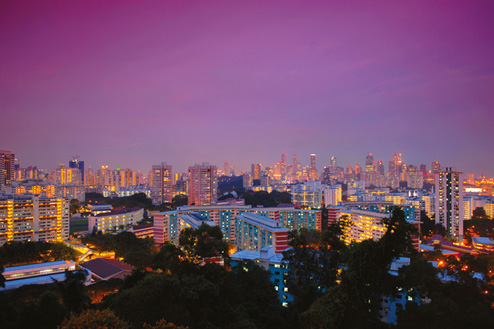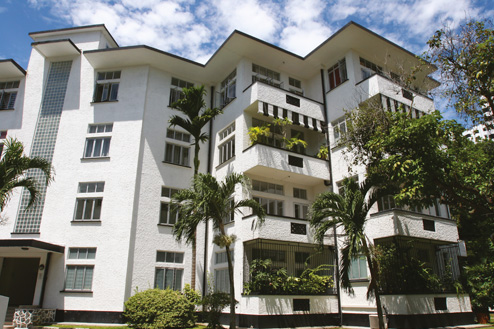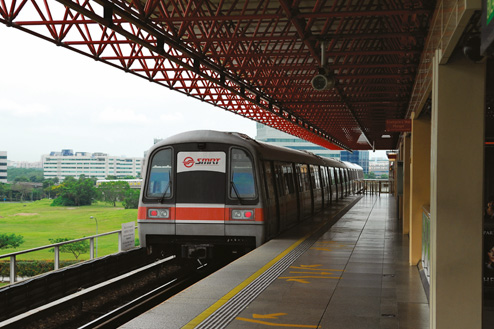Transportation
Singapore’s transportation runs like a well-oiled machine – for the most part. A modern, integrated public transportation system includes buses, mass rapid transit (MRT or the subway) and light rail. Taxis are everywhere and still reasonably cheap, making cars a luxury rather than a necessity, unless you have a family to drive around or live well off the main road.
The road system can be congested during peak hours, but generally functions well. Parking can be a frustration, but no more than it is in any other major city around the world. Singapore is also small enough for you to travel just about anywhere in not much more than 30 minutes, even when using public transport.
Buses
Buses are probably the least frequently used mode of transportation for expats, yet they can be useful if a route runs directly from your residence to your office. Given the extensive bus system, that’s not as unlikely as it might sound.
Almost all buses are now air-conditioned and have comfortable seats. They’re also cheap and run regularly between 06:00 and 23:30, seven days a week. In addition to bus numbers and route information posted at most bus stops, each bus has its number and destination on the front and a list of major stops on a panel by the door.
Detailed information on routes can be found on the SBS website (www.sbstransit.com.sg), including maps and a routefinder function that explains how best to get from point to point.
Bus fares can be paid by exact change, but it’s far more convenient to use an EZLink card, which acts as a debit card for both buses and the MRT. EZLink cards are available at major bus stations and all MRT ticket offices.
MRT
Singapore’s MRT system is world-renowned for its efficiency. Three main lines take people from the centre of town to the far reaches of the island in air-conditioned comfort. Once they’re beyond the central part of the island the lines move above ground, giving you an interesting glimpse of some areas you might not regularly see. Every station has a ticket counter where you can get help with finding your route or paying for a ticket. The MRT runs on the same EZLink cards as the buses and all you have to do is touch your card to the reader as you pass the turnstile to get through.
The current lines run west from the city centre to Jurong, east to Changi Airport and north up the centre of the island to Woodlands, before taking a turn to the west and coming down to Jurong. The Circle Line is under construction and should be completed in 2010. It will serve expat areas such as Holland Village, Bukit Timah, Pasir Panjang and Suntec. The light rail systems are located well outside the city centre and go to less accessible local residential areas, so you’re not really likely to make use of them.
Taxi
Taxis are modern, safe, relatively cheap and the best way to get around if you don’t have a car. Many people’s budgets accommodate the use of a taxi for their daily commute. Usually all it takes is a wave of the arm on any street curb and you’ll have a taxi pull up in seconds, but during peak periods and on rainy days it might be best to book one over the phone.
There are a number of taxi companies (see Taxi Companies on p.52), but they all have the same general level of service and drive the same model of car. City Cab and Comfort have the largest fleets. Rates are regulated by the government and have stayed fairly static in the last 15 years, although booking rates recently went up. The starting fare for a ride is $2.40 up to the first kilometre, with every additional 225m costing 10 cents. There are surcharges for peak periods, public holidays, passing through the Electronic Road Pricing gantries, pickups at certain locations (airport, Singapore Expo, the Central Business District) and telephone bookings. Rides from 23:00 onwards are subject to increased fare rates, with rides from 01:00 to 06:00 increasing by 50% over regular fares.
Phone bookings are available for all taxi companies and some are also automated, keeping addresses you have previously been picked up from in their database and giving them as options for you to choose from. It generally takes 5 to 10 minutes to book a taxi and have it show up at your pickup location. Some companies are linked to satellite tracking systems, making the booking process that much faster. A phone booking costs $4 from 07:30 to 09:30 and 17:00 to 23:00 on weekdays and $2.50 for all other times.
Premier Taxis, which are all Mercedes-Benz cars, have the same rates as normal taxis but booking fees are a bit higher. If you have a lot of baggage to take on your trip, you can call and request a Maxi-Cab, which is an eight-seater van.
Hiring a driver is usually the realm of the ultra-rich but if you’re particularly high up in your company, it could be one of the perks, or at least the arrangements will have been made on your behalf.













